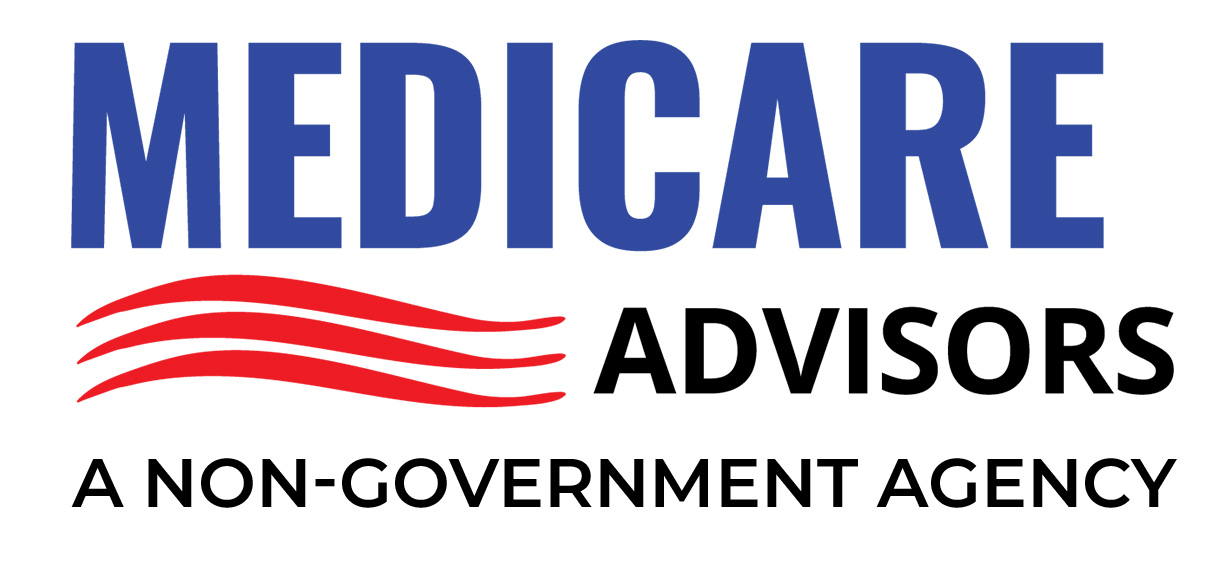When it comes to managing healthcare expenses in retirement, every dollar counts. After all, Original Medicare (Part A and Part B) only covers so much, leaving beneficiaries responsible for deductibles, copayments, and coinsurance. This is where Medigap (also called Medicare Supplement Insurance) steps in—filling some of those coverage gaps. Among the lesser-known options is Medicare Plan L, which offers a unique approach to cost-sharing that might catch your eye if you’re comfortable sharing some of your medical costs in exchange for a lower monthly premium.
In this comprehensive article, we’ll walk you through what Medicare Plan L coverage entails, why it might be a good fit, its strengths and limitations, and what real beneficiaries have to say about their experiences.
Understanding Medigap and Plan L Basics
Before diving straight into Medicare Plan L coverage details, let’s do a quick refresher on how Medigap plans work:
- Original Medicare Coverage Gaps: Original Medicare (Part A and Part B) can leave you on the hook for deductibles, coinsurance, and copayments. Some beneficiaries find that even with Medicare, they can face substantial bills—particularly if they need frequent medical services or extended hospital stays.
- Medigap Supplements: Medigap plans are standardized insurance policies sold by private companies to help cover some of the out-of-pocket costs that Original Medicare doesn’t handle. These policies vary by letter (A, B, C, D, F, G, K, L, M, and N), each offering different levels of coverage.
Medicare Plan L is one of these standardized Medigap plans, but unlike more comprehensive plans, it uses a cost-sharing model for certain services. Rather than covering 100% of certain gaps, Plan L often covers a percentage. As a result, the premiums can be lower, making it an attractive option for more budget-conscious beneficiaries.
What Does Medicare Plan L Cover?
Plan L doesn’t reinvent the wheel; it follows the same foundational approach as other Medigap plans: bridging some of Medicare’s coverage gaps. However, the percentage of what it covers can differ from plans like F, G, or N. Here’s a breakdown of the core benefits included in Plan L (as standardized by Medicare):
- Part A Coinsurance and Hospital Costs: 100% coverage for up to an additional 365 days after Original Medicare benefits end.
- Part A Hospice Care Coinsurance: 75% coverage of hospice care coinsurance or copayment under Medicare Part A.
- Part B Coinsurance or Copayment: 75% coverage of the typical 20% coinsurance you’d pay for Part B services (like doctor visits and outpatient care).
- First Three Pints of Blood: 75% coverage for the first three pints of blood needed for medical procedures each year.
- Skilled Nursing Facility (SNF) Coinsurance: 75% coverage for SNF coinsurance.
Notably, Plan L does not cover the Part B deductible, the Part B excess charges, or foreign travel emergencies at 100%. If foreign travel coverage is crucial or you want coverage for Part B excess charges (when a doctor charges more than Medicare’s approved amount), you might need to look at other Medigap plans or consider separate travel insurance.
Find Medicare Plans in 3 Easy Steps
We can help get up to $0 monthly premium Medicare plans
How Cost-Sharing Works in Plan L
One of the biggest distinctions with Medicare Plan L coverage is its approach to cost-sharing. While some Medigap plans pay 100% of certain services (after you meet the Part B deductible, if applicable), Plan L typically covers 75% of the costs listed above. You’re responsible for the remaining 25%.
Out-of-Pocket Limit
To protect you from catastrophic expenses, Plan L features an annual out-of-pocket limit. After you reach this limit (which can change year to year; for 2025 it could be in the ballpark of $3,470–$3,800—though exact figures vary), Plan L pays 100% of covered services for the remainder of the year. That limit is a critical safety net for people who might be worried about unpredictable medical costs.
Key Takeaway: While you pay more in cost-sharing upfront, Plan L’s annual out-of-pocket limit ensures you’re not left holding a sky-high bill if you have a significant medical event.
Plan L vs. Other Medigap Plans
Understanding where Plan L stands relative to other Medigap plans can help you decide if it’s right for you. Here’s a quick comparison:
- Plan F (No Longer Available to New Enrollees): Offers the most comprehensive coverage, including the Part B deductible. However, it’s closed to new Medicare beneficiaries who became eligible after January 1, 2020.
- Plan G: Covers nearly everything Plan F did, minus the Part B deductible. It’s often considered the most comprehensive plan available to new enrollees.
- Plan N: Offers a bit more cost-sharing than Plan G (e.g., copays for doctor’s visits and emergency room trips) but lower premiums.
- Plan K: Similar to Plan L but covers only 50% of certain costs and has a higher out-of-pocket limit.
- Plan L: Covers 75% of certain costs, with a moderate out-of-pocket limit—less cost-sharing than Plan K but not as comprehensive as Plans F or G.
Essentially, Plan L could be seen as a middle ground between more cost-sharing (Plan K) and full coverage (Plan G or Plan F).
Pros and Cons of Medicare Plan L
No Medigap plan is perfect for everyone. By weighing the advantages and potential drawbacks, you can get a clearer picture of whether Plan L’s coverage structure aligns with your healthcare needs.
Pros
- Lower Premiums: Because you share in 25% of certain costs, insurers can typically offer lower monthly premiums for Plan L relative to the more comprehensive plans.
- Annual Out-of-Pocket Limit: This limit protects you from worst-case scenarios, giving peace of mind if you encounter a major medical event.
- Standardized Coverage: Like other Medigap policies, Plan L’s core benefits are standardized, meaning you know exactly what to expect, no matter which insurer you choose.
Cons
- 25% Cost Sharing: That 25% might add up if you require a lot of Part B services or hospice care throughout the year.
- No Coverage for Part B Excess Charges: If your healthcare provider doesn’t accept Medicare assignment, you could pay up to 15% more than the Medicare-approved amount for services, and Plan L won’t reimburse you.
- Limited Foreign Travel Coverage: Plan L does not offer the level of foreign travel emergency coverage included in some other Medigap plans (like C, D, F, G, M, and N).
Find Medicare Plans in 3 Easy Steps
We can help get up to $0 monthly premium Medicare plans
Who Might Benefit Most from Plan L
While any eligible Medicare beneficiary can consider Plan L, there are certain situations where it’s a particularly good fit:
- Relatively Healthy Individuals: If you don’t anticipate frequent medical services or don’t have chronic conditions requiring extensive doctor visits, the lower premiums might offset the cost-sharing you occasionally face.
- Budget-Conscious Beneficiaries: If you’re willing to risk some out-of-pocket expenses in exchange for lower premiums, Plan L’s cost-sharing structure can be appealing.
- People Who Value a Safety Net: The annual out-of-pocket limit ensures you’ll never pay more than a certain amount per year. If you’re okay with some upfront costs but still want catastrophic protection, Plan L might be ideal.
Conversely, if you expect numerous specialist visits or have a condition requiring costly outpatient treatments, you may want a plan (like Plan G) that covers 100% of your Part B coinsurance.
Enrollment and Eligibility
Medicare Supplement plans, including Plan L, follow similar enrollment rules. To buy Plan L, you must:
- Have Medicare Part A and Part B: You need to be enrolled in both Parts A and B.
- Enroll During Your Medigap Open Enrollment Period: This six-month window begins when you’re at least 65 years old and enrolled in Part B. During this time, you can purchase any Medigap plan available in your area without medical underwriting (insurance companies can’t deny coverage or charge higher premiums due to pre-existing conditions).
- Consider Guaranteed Issue Rights: In certain special circumstances, such as losing employer coverage, moving out of a plan’s service area, or your Medigap insurer going bankrupt, you might have a right to buy certain Medigap plans without underwriting.
If you miss the open enrollment window, you can still apply for Plan L at any time, but insurers can ask health-related questions, potentially leading to higher premiums or denial of coverage.
Costs and Premium Factors
Medicare Plan L coverage costs can vary significantly based on a few factors:
- Location: Medigap premiums differ from state to state—and sometimes even by zip code—due to regional healthcare costs.
- Community-Rated, Issue-Age-Rated, or Attained-Age-Rated Policies:
- Community-Rated: Everyone pays the same premium, regardless of age.
- Issue-Age-Rated: Premiums are based on how old you are when you first enroll; younger enrollees pay less.
- Attained-Age-Rated: Premiums increase as you get older, typically annually.
- Insurance Carrier: While Medigap benefits are standardized, the monthly premium isn’t. Different companies offer different rates for the same plan. It pays to shop around.
Remember to factor in your 25% cost-sharing for covered services. While your monthly premium may be lower than a Plan G or Plan F, out-of-pocket costs during a year with significant medical needs might be higher—at least until you hit that out-of-pocket limit.
Reviews and Real-Life Experiences
It’s one thing to read about coverage details on paper, but learning from real beneficiaries’ stories can help clarify whether Plan L is a smart choice.
- Sarah, 67, Oregon
- “I love that my monthly premium is lower than some of my friends’ Medigap plans. I don’t see the doctor often, so I don’t mind paying a bit more when I do have a visit. Plus, there’s that limit if something major happens.”
- John, 72, Florida
- “I had a knee replacement last year, so I hit my out-of-pocket limit mid-year. After that, Plan L covered everything. It was a relief not having to worry about money while recovering.”
- Margaret, 75, New York
- “I thought I’d be okay with the 25% coinsurance, but it added up fast for physical therapy sessions. I ended up switching to Plan G the next enrollment period because I had enough of paying out-of-pocket.”
These anecdotes highlight that Plan L can work well for relatively healthy people who prefer lower premiums and appreciate a cap on annual spending. However, for those needing frequent medical services, the cost-sharing might become too high.
Find Medicare Plans in 3 Easy Steps
We can help get up to $0 monthly premium Medicare plans
Frequently Asked Questions (FAQ)
Q1. Does Medicare Plan L coverage extend to prescription drugs?
No. Like other Medigap plans, Plan L does not cover stand-alone prescription drug costs (Part D). If you need prescription drug coverage, you must enroll in a Medicare Part D plan.
Q2. Will Plan L cover my Part B deductible?
No. Plan L does not cover the Part B deductible. Beneficiaries are responsible for paying the annual Part B deductible out-of-pocket before the plan’s 75% cost-sharing benefit kicks in for Part B services.
Q3. Can I use Medicare Plan L with a Medicare Advantage Plan?
No. By law, you cannot have both a Medigap policy and a Medicare Advantage plan simultaneously. Medigap plans only work with Original Medicare (Parts A and B).
Q4. What if I travel abroad frequently?
Medigap Plan L does not include foreign travel emergency coverage. Plans like C, D, F, G, M, and N may offer limited emergency coverage outside the U.S. If you travel a lot, Plan L may not be your best fit—or you could look into separate travel health insurance.
Q5. Do all insurance carriers offer Plan L?
Not necessarily. While Plan L is standardized, not all private insurers sell it. Availability can depend on your state and the insurance provider’s offerings. Always compare plans from multiple carriers in your area.
Q6. Is Plan L the same in every state?
Yes, aside from Minnesota, Massachusetts, and Wisconsin (which have different Medigap standardization rules), Plan L’s benefits are standardized nationwide. However, premiums and insurer offerings vary by location.
References
- Centers for Medicare & Medicaid Services (CMS): www.cms.gov
- Official Medicare Website: www.medicare.gov – for comparisons of Medigap plans and coverage details
- National Association of Insurance Commissioners (NAIC): www.naic.org – for resources on Medigap standards and consumer guides
Final Thoughts
Medicare Plan L coverage provides a lower-premium route for beneficiaries who prefer a cost-sharing arrangement. With 75% coverage of Part B coinsurance, hospice care, and other gaps, plus an out-of-pocket limit to guard against catastrophic costs, it’s an intriguing middle-ground option.
However, the real question is: Are you comfortable paying some extra out-of-pocket expenses—up to 25%—when you use healthcare services? If you’re relatively healthy, that trade-off might be worth the savings in monthly premiums. Meanwhile, if you know you’ll need multiple doctor visits, specialists, or a potential surgery in the near future, you may want to compare Plan L to other Medigap plans (like Plan G or Plan N) before making a final decision.
Remember, while the coverage is standardized, premiums and insurers’ customer service can vary widely. Always:
- Compare Quotes: Gather multiple quotes from different insurance carriers.
- Check Reviews: Investigate each insurer’s reputation for handling claims and offering support.
- Seek Professional Advice: If you’re unsure, consult a licensed insurance broker or a State Health Insurance Assistance Program (SHIP) counselor for personalized guidance.
By taking these steps, you’ll be well on your way to finding a Medicare Supplement plan—Plan L or otherwise—that best aligns with your healthcare needs, budget, and overall lifestyle.





